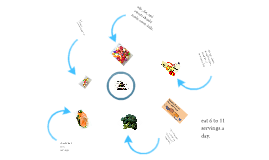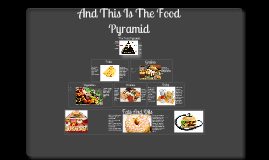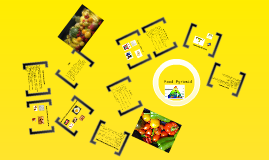Food Pyramid
Transcript: Fruits Milk, Yogurt, & Cheese Vegetable Facts! Meat, Poultry, Fish Bread, Cereal, Rice, Pasta •Go easy on fats and sugar added to food in cooking or at the tablebutter, margarine, gravy, salad dressing, sugar, and jelly •Choose fewer foods that are high in sugarscandy, sweet desserts, and soft drinks •The most effective way to moderate the amount of fat and added sugars in your diet is to cut down on “extras” (foods in this group). Also choose lower fat and lower sugar foods from the other five food groups often Meat, Poultry, Fish, - 2-3 servings 2-3 ounces of cooked lean meat, poultry, or fish 1/2 cup of cooked dry beans, 1 egg, or 2 tablespoons of peanut butter count as 1 ounce of lean meat Facts Food Pyramid •Choose lean meat, poultry without skin, fish, and dry beans and peas often. They are the choices lowest in fat. •Prepare meats in lowfat ways: oTrim away all the fat you can see. oRemove skin from poultry. oBroil, roast, or boil these foods instead of frying them. •Nuts and seeds are high in fat, so eat them in moderation. vegetable Facts Facts Fruit- 2-4 servings 1 medium apple, banana, orange 1/2 cup of chopped, cooked, or canned fruit 3/4 cup of fruit juice Bread, Cereal, Rice, Pasta Meat, Poultry, Fish •Different types of vegetables provide different nutrients.Eat a variety. •Include dark-green leafy vegetables and legumes several times a week--they are especially good sources of vitamins and minerals. Legumes also provide protein and can be used in place of meat. •Go easy on the fat you add to vegetables at the table or during cooking. Added spreads or toppings, such as butter, mayonnaise, and salad dressing, count as fat. FACTS Bread, Cereal, Rice, and Pasta- 6-11 servings 1 slice of bread 1 ounce of ready-to-eat cereal 1/2 cup of cooked cereal, rice, or pasta Vegetable- 3-5 servings 1 cup of raw leafy vegetables 1/2 cup of other vegetables, cooked or chopped raw 3/4 cup of vegetable juice FACTS Fats, oils, & sweets Milk, Yogurt, and Cheese- 2-3 servings 1 cup of milk or yogurt 1 1/2 ounces of natural cheese 2 ounces of process cheese •To get the fiber you need, choose several servings a day of foods made from whole grains. •Choose most often foods that are made with little fat or sugars, like bread, English muffins, rice, and pasta. •Go easy on the fat and sugars you add as spreads, seasonings, or toppings. •When preparing pasta, stuffing, and sauce from packaged mixes, uses only half the butter or margarine suggested; if milk or cream is called for, use lowfat milk. •Choose fresh fruits, fruit juices, and frozen, canned, or dried fruit. Go easy on fruits canned or frozen in heavy syrups and sweetened fruit juices. •Eat whole fruits often--they are higher in fiber than fruit juices. •Count only 100 percent fruit juice as fruit. Punches, Ades, and most fruit "drinks" contain only a little juice and lots of added sugars. •Choose skim milk and nonfat yogurt often. They are lowest in fat. •1 ½ to 2 ounces of cheese and 8 ounces of yogurt count as a serving from this group because they supply the same amount of calcium as 1 cup of milk •Choose “part skim” or lowfat cheeses when available and lower fat milk desserts, like ice milk or frozen yogurt. Read labels.

















